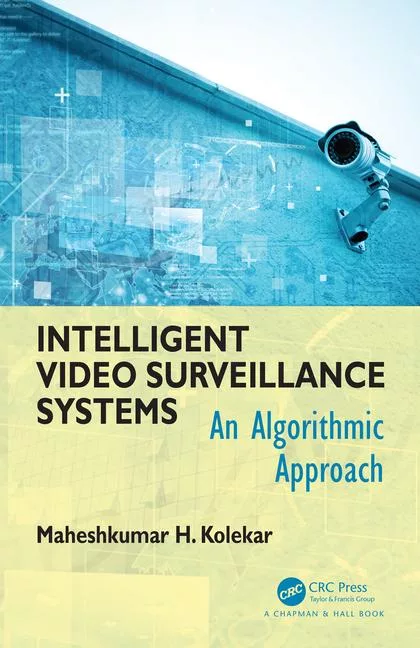12 Cost-Efficient Video Surveillance Strategies
There are plenty of books, webinars and conferences on cost-effectiveness analysis. But the simplest is producing good results without costing a lot of money, which is also an important mission of enterprise security executives.
Here are 12 strategies when it comes to security video and surveillance.
1. Get internal partners.
Today, a majority of purchasing decisions related to enterprise security video involve the internal IT department for infrastructure sharing, cybersecurity, certification and maintenance needs. Just a few years ago, and for some through to today, physical security professionals looked at IT participation with a jaundiced eye. No more.
IT owns, operates and maintains most enterprise communication networks. With the growth of IP security video, network cameras, Power over Internet (PoE) and the Internet of Things (IoT), to name a few trends, IT has firmly established itself as a security partner. And, on the positive side, it’s a partner often with a vastly larger budget, profile and mission to help within the enterprise, points out Pete Pouridis, former VP, loss prevention at the Neiman Marcus Group. “Technology is pretty sophisticated today and getting even more complex and interconnected,” he says.
One example: The Chicago area Stratford Square Mall and its IT and security staff worked with IT services company Preferred Communication Systems to install high-definition cameras throughout common areas in the 1.3 million-square-foot facility. Such sharing proved both secure and cost effective.
More recently when it comes to cost-effective video, security professionals now partner with their internal colleagues beyond IT, often to share the technology but also to sometimes gain from the partners’ budgets.
Retail loss prevention is a case in point.
Numerous presentations at this year’s National Retail Federation (NRF) Protect 2015 event centered on the partnership theme. Joe Toth, vice president, loss prevention, at Guess?, Inc. and David Johnston, senior director, loss prevention at Dunkin' Brands, talked about “Making the Shift – Transitioning Loss Prevention from a Support Role into a True Business Driver.”
And Chris Nichols, vice president, National Stores, got security executives at the NRF event excited about “Using Video Intelligence to Realize Positive Financial Impact in Retail.”
Such cost-sharing partnerships are happening or can happen elsewhere. Security video is being used for business process and environmental monitoring as well as staff training and regulatory auditing purposes at sites ranging from utilities, healthcare facilities and industrial plants to financial institutions and fast food operations.
2. Go with cloud-based services.
Through an on-site security command center, through a dealer or integrator or through a third-party central monitoring station, cloud-based services can provide forensics storage and retrieval, remote video verification, virtual guards, surveillance services and even business process and environmental services unrelated to security.
The cloud is also a significant trend of IT operations.
Cloud computing can be today’s solution for everything from email, office applications and big data to video surveillance. In a nutshell, in the cloud applications are the use of resources (hardware and/or software) delivered as a service over a network, typically the Internet, but the cloud can be internal and private, too.
Enterprise security executives may not have to know exactly everything that is going on in the cloud, just that their needs are being met. It’s rental, not buying. So there can be some cost savings, or at least cost distribution, when it comes to such services as:
- Infrastructure as a service (IaaS)
- Platform as a service (PaaS)
- Software as a service (SaaS)
- Storage as a service (STaaS)
- Security as a service (SECaaS)
- Video surveillance as a service (VSaaS)
Specific to the cloud and security video, what also drives this application is the growing use of mobile access, display and control anywhere through laptops, smartphones and tablets, especially for security video and clips of alarms and incidents.
3. Consider megapixel and panoramic cameras.
Look for locations and sensitivities where placement of technology with longer range or covering more of the scene can cut down on total number of cameras. And this strategy is a good way to migrate cost effectively to newer IP technology.
In addition, some panoramic units offer full 180-degree or 360-degree overviews of a particular area with megapixel sensor resolution at 30 frames per second combined with a fish-eye lens. There is a zoom-in capability with close-up images transmitted in separate streams so that both overview and detail can be viewed or reviewed at the same time. User-side and built-in (edge) dewarping eliminates image distortion caused by the fish-eye lens.
4. Emphasize optics selection and quality.
Lower resolution of analog and VGA cameras is more forgiving when it comes to lens selection. But using an inferior lens with a megapixel or HD camera can undermine camera and overall system performance. When high-definition and IP megapixel cameras first began to emerge on the market, there was a lag in the lenses for them. But the gap has closed. So it makes cost sense to match quality of the lens with the higher level resolution of the cameras.
5. Review transmission options.
There are different types of standard copper cabling including coax, UTP, twisted pair and copper-line Ethernet. More typically in networks, there is CAT5 and CAT6 cabling. There are fiber optics approaches as well as numerous wireless ones including microware, wireless mesh, cellular and Wi-Fi, as examples.
Picking the right method per a location, infrastructure or application can positively impact the installation cost in addition to the total cost of ownership.
Concerning wireless, the City of Compton, California, has taken a unique route with millimeter wave transceivers, according to security consultant Bob Keyes, a retired Clovis, California, police officer. The wireless system aims for high capacity rooftop and street level IP video surveillance security network connectivity. As security networks grow in size and complexity, dealing with increasing amounts of data and interference is becoming a challenge; and this is where millimeter wave wireless links shine, Keyes contends. “It’s cost effective for what it delivers.” Recent millimeter advances have sliced the technology by 90 percent and more; devices have shrunk in size while performance increased significantly.
Millimeter-wave plays off the recent trend of compact base stations, known as small cells, to expand data capacity.
Video signals demand the greatest bandwidth and, accordingly, a higher data rate. Speeds of many gigabits per second are needed to transmit 1080p high-definition video. That data rate can be reduced if video compression techniques are used prior to transmission but sometimes at the expense of the video quality or in other negative ways.
6. Evaluate methods to store and retrieve video.
There are numerous storage methods and devices from hard to virtual to cloud. Especially as security video turns into big data and video systems more closely integrate with a diversity of security and business systems, storage standards are important and falling into place. Following such standards is smart and will prove cost effective in the long run. Just a year ago, for instance, industry standards organization ONVIF released Profile G, the specification that encompasses on-board video storage, searching, retrieval capabilities and media playback.
Profile G was created to further refine the interoperability between live video and video storage. It covers cameras, encoders and network video recorder (NVR) devices as well as client systems such as video management systems, building management systems and physical security information management (PSIM) systems, among others. Profile G had been in release-candidate status for the past six months to provide review within the industry.
ONVIF introduced the profile concept to enable end users to more easily identify features supported by a profile without determining the compatibility between versions of the ONVIF specifications. Already in existence are Profile S for video and audio streaming and Profile C, which allows interoperability between clients and devices of physical access control systems and network-based video systems.
Network video recorders (NVRs) are at the center of today’s IP video systems. One advance – storage area network (SAN) technology – is dropping in cost and increasing in features. An example is new higher level enterprise SANs.
7. Access the advantages of Power over Ethernet.
Power over Ethernet delivers power over the same cabling that also supports Ethernet communications. Using PoE can help minimize cost and installation time by eliminating the need to provide traditional power at every device location. PoE Plus, a tech advance, will be even more cost effective by handling more devices at the edge.
8. Create an analog to IP/network migration plan in steps that match security needs and locations as well as budget.
Even with the jazzy talk of bigger and bigger networked megapixel cameras, many enterprise users of security video still have analog cameras, some with encoders and some with hybrid IP, as they move to a digital world. According to Dave Sweeney, chief operating officer at integration firm Advantech, there is no silver bullet when transitioning to digital and megapixel. Every customer’s applications and environment are different.
One example: At Germany’s Airport Weeze, migration steps include an open architecture video management platform (from Nedap Security Management). During the start-up phase, about ten cameras were first installed at Airport Weeze; and then followed by 70 more cameras. The images of the still existing analog cameras are converted to digital images. Thanks to the platform’s flexibility, Airport Weeze can freely decide what type of cameras they want to use, the way they want to store the video images, what the quality of the video stream should be and what and when they want to record. And best of all, all security tasks can be handled from one single management system.
9. Working with a dealer or integrator, pick a solution or an upgrade that is easier to install and maintain.
Time equals money, and when scaled up to enterprise-size projects, ease of installation can save hours or even days to complete an installation. And save the end user money. Delays caused by installation challenges can add up. So insisting upon products, systems and accessories that are simple to install and maintain is cost effective.
10. Concentrate on a security platform that scales up easily and blends diverse security systems within a single intuitive interface.
Texas-based South Plains Electric Cooperative (SPEC) and SPEC’s network and systems administrator Tim Warren knew they needed to find an enterprise-grade, open platform security system that would unify all of SPEC's physical security requirements, including video surveillance and access control, but also manage potential alarms triggered by their perimeter intrusion system. Now Warren’s platform from Genetec is able to monitor 190+ cameras and 200+ access control-enabled doors from either a central operations center or from mobile devices.
As SPEC continues to upgrade its security infrastructure and more cameras deployed, the platform will scale up easily and also bring new substations into the system.
For the City of Lakeland Florida, one of the biggest persuaders to choose its new security platform (also from Genetec) was its innate open architecture, which allows the city to choose its preferred brands and models of hardware, while also leveraging existing investments to lower their total cost of ownership. “We were able to preserve existing analog cameras and also the cable, power and card technologies from previously installed access control systems at various sites,” says Alan Lee, security and safety systems supervisor, Public Works Facilities. Being able to capitalize on existing investments, he saved around $200 per camera.
11. As prices come down for video analytics, look at this technology at the edge in cameras or in system software.
From a rough and limited start with simple motion detection years ago, video analytics has come a long way – with prices, depending on features, also coming down, according to Steve Birkmeier of Arteco.
With video analytics, security is able to limit false alarms and make the video more searchable for events. The bottom line: Security receives more accurate notifications and finds the video they are looking for more quickly. Birkmeier sees value in event- and area-oriented analytics. There are object, behavior and license plate recognition analytics, too.
At the recent ASIS International annual exhibition in Anaheim, an analytics tool received the ASIS Accolades Security's Best Award for a product called Object Origin, a video monitoring and analytics tool that can analyze hours of recorded surveillance video within seconds to detect the first appearance of suspicious objects or vehicles.
Increasingly, analytics can provide a way for enterprises to use video for more than just security. End users leverage video analytics in ways that enhance their operations and improve processes – positively impacting the company’s bottom line. Retail uses security video for marketing and merchandizing through analysis of demographics and traffic patterns, for example.
12. Embrace to some degree the Internet of Things.
“What we have right now are new and old devices that once did not communicate that can now be accessed online and provide data,” says Jeremy Brecher, vice president of technology for electronic security, Diebold Security. He was recently featured in a cover story in Securitymagazine’s sister publication, SDMmagazine. “There is more technology at the edge coming online. Anything from a car to a Fitbit, to smartphones and smart refrigerators are all part of the IoT. But the bigger piece for security is there are more and more devices coming online to provide information. We also have a combination of elements like cloud technology and APIs that allow us to take these devices and make them into something that can look at that data.”
Agreeing with Brecher, “Something we have been talking about is the idea that the security industry may actually be one of the first pioneers of the Internet of Things,” says Joe Gittens, director of standards for the Security Industry Association (SIA). So look forward to cost effectiveness built into IoT beyond simple IP addresses in security cameras.
In a thumbnail description, the Internet of Things is the network of physical objects or “things” embedded with electronics, software, sensors, and network connectivity, which enables these objects to collect and exchange data.
Looking for a reprint of this article?
From high-res PDFs to custom plaques, order your copy today!







